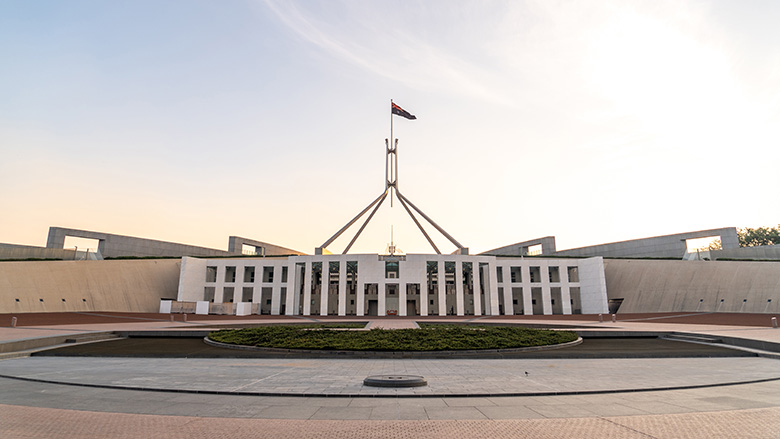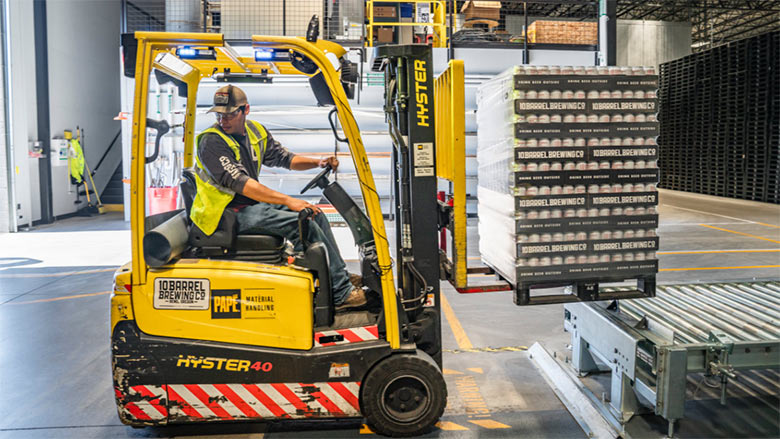As per the latest Economics Update (“2021/22 Australian Budget –Fiscal policy supports strong recovery”), published 11 May, the 2021/22 deficit is expected to decline to $A106.6bn (5.0 per cent of GDP).
“For 2021/22 the stronger economy delivered an extra $A26.8 billion to the bottom-line, but $A21.5 billion of this was spent. By 2023/24 the deficit is expected to be down to $A57.0 billion (2.4 per cent of GDP),” the report read.
Here, CBA Newsroom looks at some of the key initiatives outlined in the 2021/22 Federal Budget that are aimed at creating jobs and supporting the economy as it continues its post-pandemic recovery.
Housing and home-owners
As announced ahead of the full budget release, the government will introduce a new Family Home Guarantee that aims to give 10,000 single parents with dependants the opportunity to build a new home or purchase an existing home with a deposit of as little as 2 per cent. Further, the First Home Loan Deposit Scheme (New Homes) which was launched last year, will be expanded for a second year, providing an additional 10,000 places in 2021-22.
Meanwhile, the First Home Super Saver Scheme (FHSSS) has been tweaked, raising the maximum amount future first home buyers can save from $30,000 to $50,000.
CBA Economists’ view: The three policies above add to demand for housing. The Home Builder grant scheme, which came into play in 2020, has supported a large lift in housing supply.
Small Business
Businesses with turnover of up to $5 billion can deduct the full cost of depreciable assets until July 2023. In addition, the government announced an extension to a temporary measure that allows businesses to generate a tax refund on losses. Businesses will be able to “carry back” tax losses for the 2022/23 year to offset previously paid taxes going back to 2018/19.
CBA Economists’ view: These two measures are expected to provide an additional $A20.7 billion in take relief over the forward estimates.
Income tax
Tax relief for low and middle income earners has been extended, providing workers earning less than $A126,000 per year up to $A1,080 of tax relief. This extension is expected to cost $A7.8 billion.
Families
The Budget has included an extra $A17.7 billion for aged care over five years. Extra funding will go towards training an additional 33,800 staff, support for the elderly to stay in their own homes and more resources for residential facilities.
Meanwhile, child care costs for families with two or more children will fall, with the government allocating an additional $A1.7 billion to the sector.
Superannuation
The Government has scrapped the $A450 per month superannuation threshold, allowing super contributions to now be paid on amounts less than this. In addition, the minimum age at which Australians can make a post-tax contribution to their super after selling the family home has reduced from 65 to 60.
CBA Economists’ view: This policy is designed to encourage downsizing and free up larger homes for families.
Environment
The Budget also included a significant environmental investment, including $565.8 million for international technology partnerships/initiatives and co-funding research and demonstration projects; $A275.5 million to accelerate the development of four additional clean hydrogen export hubs and implement a clean hydrogen certification scheme; and $A316.7 million to help industry and businesses reduce their emissions through voluntary action and adopting low emissions technology.
CBA Economists’ view: The Government’s plan to invest in four additional clean hydrogen hubs in regional Australia shows the Government recognises that it has a major role to play to commercialise the clean hydrogen sector. We think the Hunter Valley in NSW is the most promising hydrogen hub proposal. The region faces the most immediate stranded asset risks given the Port of Newcastle is one of the world’s largest thermal coal export hubs. Thermal coal trade faces significant downside risks as the world looks to decarbonise.
According to CBA chief economist, the fiscal measures outlined in the Budget details a “strategic shift from broad-based assistance to targeted programs across a number of sectors that aim to reduce unemployment, support the ongoing economic recovery and ensure the benefits of the recovery are wide-spread.”
“This Budget aims to put more people into jobs and push the unemployment rate below 5 per cent by addressing structural issues such as aged care, child care, home ownership, skills shortages, infrastructure and female labour force participation,” Stephen Halmarick said.
Note to editors:
Source: Commonwealth Bank of Australia, Global Economic & Markets Research report “CBA Economics: 2021/22 Australian Budget – Fiscal policy supports strong recovery”, published 11 May 2021, author Stephen Halmarick.
Disclaimer: Things you should know
The information presented on this webpage is an extract of an Economic Insight report and provides only a summary of the named report. Click here to access the full report, and view all relevant disclosures, analyst certifications and the independence statement.
The Economic Insight report discussed is not investment research and nor does it purport to make any recommendations. Rather, the named report is for informational purposes only and is not to be relied upon for any investment purposes.
This extract has been prepared without taking into account your objectives, financial situation (including your capacity to bear loss), knowledge, experience or needs. It is not to be construed as an act of solicitation, or an offer to buy or sell any financial products, or as a recommendation and/or investment advice. You should not act on the information contained in this extract or named report. To the extent that you choose to make any investment decision after reading this extract and/or named report you should not rely on it but consider its appropriateness and suitability to your own objectives, financial situation and needs, and, if appropriate, seek professional or independent financial advice, including tax and legal advice.
Global Economic and Markets Research is a business unit of Commonwealth Bank of Australia ABN 48 123 123 124 AFSL 234945 (Bank). The Bank and its subsidiaries, including Commonwealth Securities Limited ABN 60 067 254 300 AFSL 238814, Commonwealth Australia Securities LLC and CBA Europe Ltd are domestic or foreign entities of the Commonwealth Bank Group of Companies




